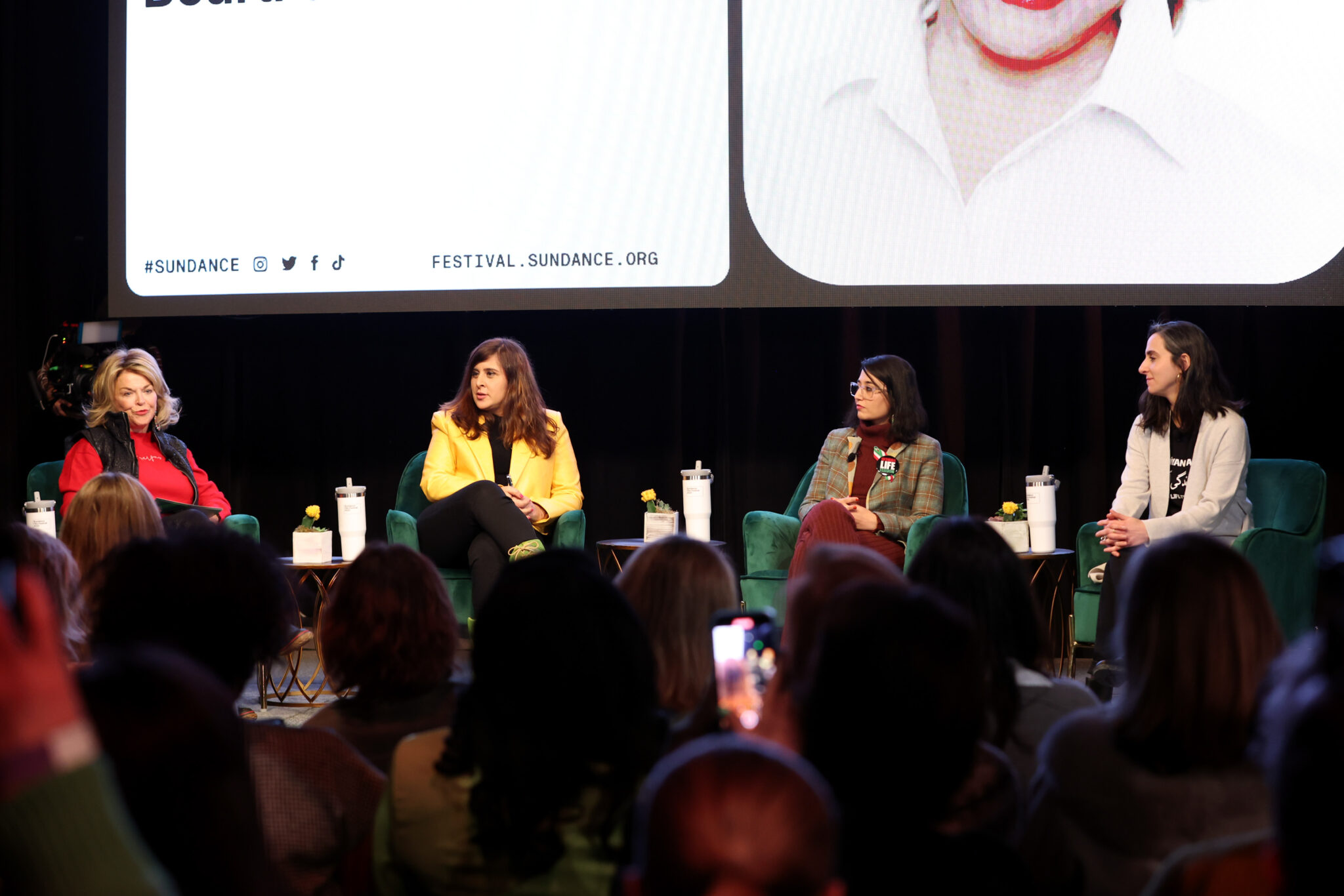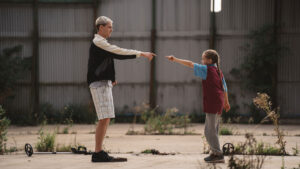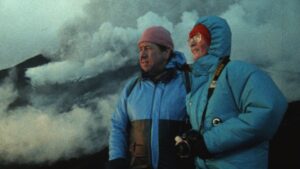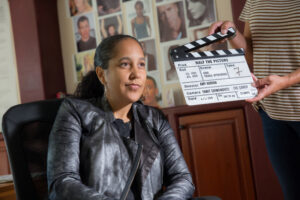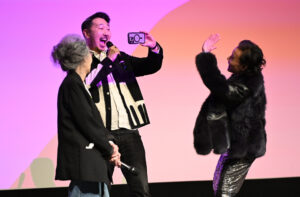(L-R) Pat Mitchell, Maryam Keshavarz, Noora Niasari and Sierra Urich speak at the 2023 Sundance Film Festival Women at Sundance Celebration in Park City, Utah. (Photo by Robin Marchant/Getty Images)
“Fifty-six percent of the feature films [that premiered at the Festival] were directed by women this year, and if that sounds like a lot, it’s because it is,” Sundance Institute CEO Joana Vicente says to a crowded, cheering room at the Women at Sundance Presented by MSNBC Films and NBC News Studios celebration January 21 in Park City.
The Park was full of women creators who were ready to celebrate their films in the Festival program and the accomplishments they’ve made to independent cinema.

“That’s really a theme of the 2023 Festival,” says Vicente. “The Festival includes the highest percentage of women directors in Sundance history. What I find really thrilling is this: we didn’t set out to find work directed by women. We set out to find the most exciting, compelling, interesting stories, and it just so happened that the majority of those are coming from women and BIPOC filmmakers.”
Having been two years since this event last took place, guests were excited to come together to catch up over appetizers, cocktails, and panel discussions. Artists including Noora Niasari (Shayda), Maryam Keshavarz (The Persian Version), Sierra Urich (Joonam), and Dakota Johnson (The Disappearance of Shere Hite), took the stage to participate in important discussions about sexual liberation and creating films centered around Iranian culture.
“Progress for women in film doesn’t just happen. It is the result of work that happens year-round, every single day,” says Vicente. “This work matters. Without it, we miss out on stories that move and entertain us.”
Michelle Satter, Founding Senior Director, Sundance Institute’s Artist Programs, introduced the first panel discussion, but not before showing her excitement to be back on the mountain.
“It’s so great to be back in person. It’s thrilling. Out of all the events, and there are many, this was the one we needed to get back,” says Satter.
The first panel to go up featured Niasari, Keshavarz, and Urich, and was moderated by Sundance Institute board member Pat Mitchell. The three directors came together to talk about the experiences of women in Iran. But what was really compelling was how much they looked up to the women before them as inspiration for their films.
“I wanted to write something joyous about the immigrant experience, and I started looking at how my mother and I are both writers in some way. My mother, as an immigrant, rewrote her story, and I, as a filmmaker, am constantly looking to rewrite the narrative of the Middle Eastern-Muslim experience. So it was really that the issue of identity had to tie into my past, and how I connected to my mother’s story and my mother as an Iranian,” says Keshavarz.

Guests were thrilled to hear from Johnson, who sat down with news anchor and women’s advocate Stephanie Ruhle, and talked about redefining power as a woman and not just owning your sexuality, but being proud of it.
“I think I’m sort of redefining what that means to me,” says Johnson. Referring to her role in 50 Shades of Gray, she explains, “I never saw that character as a sex symbol, and I never felt like one. I was really interested in the psychological aspect of that relationship, and someone exploring their sexuality and really being okay with themselves. That was what I was interested in.”
Since that role, Johnson has brought women along with her on this journey to sexual empowerment. “Women deserve that. I think it’s dire that being allowed to have whatever sexuality they want or dream of should be totally supported.”
When asked about her decision to become an investor and co-creative director for sexual wellness company Maude, Johnson says, “I started working professionally when I was 18, and I experienced what it can be like on a film set where you don’t have any power. And it can be really tough. You can give your heart and soul, and then you have no control over what happens. The film company you’re working with, they’ll just make whatever movie they want. I didn’t like that after a while. I wanted to have more control. My grandmother worked with Hitchcock and he really damaged her career and she didn’t end up making all the movies she could have.”
“Creating an environment that is really uplifting, really supportive, when every human on the set, or making the movie, or in the writing process feels totally valued and totally equal… everyone works harder, has a good time, and is happier. And, to me, that’s what feels right.”




